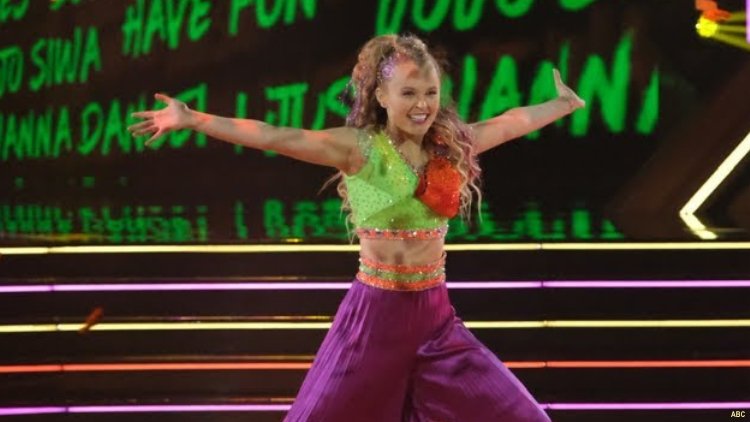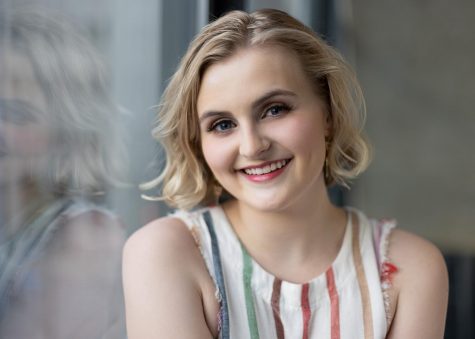Jojo Siwa is a groundbreaking force.
On Sept. 20, history was made during the premiere of this season of Dancing with the Stars (DWTS) on ABC. After 29 seasons and 336 contestants, there is finally a same-sex pairing on the show. Siwa, who gained her popularity off of her large bows and even larger personality, was paired with professional dancer Jenna Johnson for this season, and after competing their first dance, they received the highest score of the night.
Earlier this year, Siwa came out as a part of the LGBTQ+ community and has quickly become a significant role model, inspiring and advocating for being one’s true self. After announcing her inclusion in the season, she was met with mixed reactions, but the majority of them were positive.
Many believe this type of pairing is long overdue as many of DWTS’s international counterparts have already accomplished it, and finally, the American version has stepped up. For example, back in 2010 on DWTS Israel, Gili Shem Tov, a lesbian sportscaster, was paired with professional dancer Dorit Milman. Season-long same-sex pairings have also been seen on DWTS Italy and DWTS Denmark, where two men were paired together.
But now, as seen on ABC, should this be considered groundbreaking?
Yes, an important milestone was met that will hopefully encourage the show to include more same-sex pairings, but when looking at past patterns, the future does not look too bright for LGBTQ+ visibility.
Being the first of same-sex pairings on the American version of DWTS, there is now only 1/336 or 0.003 percent representation of season-long non-gender-conforming dance roles on all 30 seasons of the ABC program. Gallup’s latest update “on lesbian, gay, bisexual or transgender identification finds 5.6% of U.S. adults identifying as LGBT.” In comparison to the percentage of the American population that identify with this community, DWTS is falling short.
As the world is changing, more representation for all communities is needed, and over the past 10 years, people have been asking. Same-sex marriage has become less and less taboo over the years, and ever since becoming fully legalized in 2015, it is now very common in American society. A same-sex pairing should not be seen as unique, it should be part of every season.
DWTS has also had openly gay contestants in the past such as Johnny Weir (Season 29) and Adam Rippon (Season 26), but the show disregarded pairing them with a person with the same gender. This could be because they preferred to be paired with females, or they were never even given the option.
Unlike many think, ballroom dance pairings do not have to do with sexuality or sexual chemistry. Chemistry between partners can be made in many ways. For years, with a shortage of boys in ballroom dancing, girls who do not identify as a part of the LGBTQ+ community have had to be paired together on numerous occasions, including in competitions. The ballroom steps that, traditionally, a man does are not that different from what a female is asked to do, so switching around the partnerships would not harm the integrity of the dance.
In the past, DWTS has taken advantage of traditional ballroom dancing norms to excuse themselves from same-sex pairings, but the world of dance is an ever-changing art form that continues to grow and develop day by day. Breaking the 29 season pattern, Siwa and Johnson were added to Season 30.
Not only has the show been faced with issues regarding the lack of representation, but their motive behind it as this begs the question if the show actually wants to add this pairing or if they felt obligated to appease the newest part of their population of viewers.
With an IMDb rating of 4.7/10, the show is dying. In the peak of its time, Seasons 11 and 12 “averaged nearly 22 million viewers for the performance night episodes.” Today, seasons are lucky to reach 6.5 million viewers. For example, “Season 28 averaged 6.74 million viewers and season 29 averaged 6.19 million.” This was the first time in history the show’s average viewership dipped below 7 million. To try its best in reviving the show, they decided to change their target audience to one that is much younger.
Ever since the beginning of the series, the show has appealed to an older generation that tends to not understand the gender fluidity spectrum as well as Gen Z. In order to combat this, the show decided to fire long-time hosts Tom Bergeron and Erin Andrews. Instead, they replaced them with Tyra Banks in efforts to appeal to a younger audience. This helped, but apparently not enough.
Enter their newest publicity stunt: Siwa.
Siwa, a member of the LGBTQ+ community and a celebrity with a fan base consisting of mostly kids is the perfect person to boost views. Not only would she attract kids wanting to watch their favorite TV personality, but a same-sex pairing would affect the views for sure.
During the first episode, Judge Bruno Tonioli sang praises and said, “Finally! The groundbreaking moment we have all been waiting for!” Yes, this was a momentous occasion for many, but it was anything but groundbreaking as it has been done a few times before. The American version of DWTS is just behind when it comes to hopping on the bandwagon.
Many hope that Siwa’s appearance will spark more same-sex pairings in ballroom culture, but as the show seems to have mixed reasons for having her on the show, her exploitation might do no good. At this point, Siwa’s appearance on DWTS seems more like a rare occurrence rather than the beginning of a new chapter of LGBTQ+ visibility.









